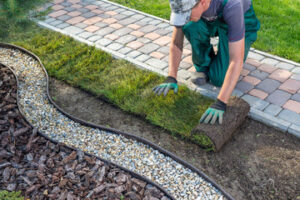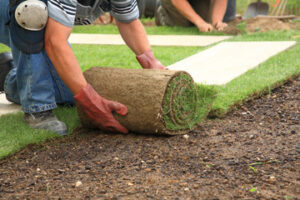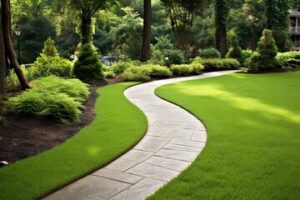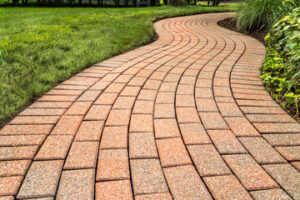Greensboro Landscaping is the process of changing an outdoor space by adding plants, flowers, and structures. It also includes maintaining gardens and lawns by pruning, watering, and weed control.

Choose plants that thrive in the local climate and soil conditions. These are easier to maintain and require less supplemental watering. Also consider using plants with varying heights to create depth and interest in the garden.
Landscaping is an investment in both your home and the environment. It increases property value, creates functional outdoor areas and makes the space more attractive. It is important to understand the costs involved so that you can budget properly for your project. The costs of landscaping vary depending on the size of your yard, complexity of design and type of landscape. The geographic location also affects the cost as prices vary by region and materials need to be sourced locally. The current state of the yard also impacts the cost. Yards that need extensive cleanup and preparation are more expensive than those in good condition. Landscaping can be divided into two types: softscaping and hardscaping. Softscaping includes plants, grass and trees while hardscaping refers to features such as walkways, patios and firepits. Both types of landscaping are a great way to enhance your home’s curb appeal but they require different approaches.
A professionally designed landscaping plan can be very cost effective. It will help to minimize maintenance costs, ensure proper plant selection and provide the best possible results. It will include an overall layout, design details and a detailed budget. The plan will also include recommendations for ongoing care and maintenance.
It is important to be aware of the costs of landscaping before starting your project. This will help you determine whether it is within your budget and will help you make informed decisions regarding the scope of the project. A professional landscaper will work with you to come up with a creative and unique plan that suits your needs and budget.
The costs of landscaping are often overlooked by homeowners. The benefits of a well-designed garden far outweigh the initial expense. Not only does it improve the appearance of a home, but it also provides health and wellness benefits. For example, research has shown that walking in a green space lowers blood pressure and improves concentration. It is also a great place to spend time with friends and family.
The average homeowner will spend about five percent of the value of their home on landscaping. However, a good landscaping design can increase the resale value of your property by up to twenty percent.
Materials
The success of any landscaping project depends on the right mix of raw materials. Whether you’re creating a peaceful garden, tranquil patio, or functional driveway, the following top 10 essential landscaping materials play a critical role in their construction and aesthetic.
Soil is one of the most important raw materials in landscaping. It serves many functions, including providing nutrients and structure to plants. It also prevents erosion and improves drainage efficiency. In addition, soil can be modified by grading and terracing to boost visual appeal. It is also a great base for retaining walls, water features, and pathways.
Gravel is another common raw material that can add texture and contrast to landscape designs. It is available in a wide range of colors and sizes, making it versatile for various functions. For example, smaller gravel is perfect for pathways, while larger gravel can be used as a decorative accent.
Mulch is a vital component of any landscape, as it helps keep weeds under control and adds color to gardens. It is available in a variety of shades and textures, and can be mixed with sand to create a more level surface for pavers or patios. It can also be dyed to create a vibrant hue and complement architectural features in the landscape.
Timber is a natural, durable material that can provide structure and warmth to landscapes. It is often treated to resist rot and insects, and it can be used for everything from retaining walls to garden edging. It can also be used to create structures such as pergolas, gazebos, and arbors.
Concrete blocks are a versatile and affordable material that can be used for a variety of purposes in landscaping. They come in a wide range of shapes and sizes, and can be used to create steps, walkways, and driveways. They are also ideal for building retaining walls and are available in a wide variety of colors.
Lines are a crucial element of any landscape design, and can be created using a variety of materials. They can be straight, curved, horizontal, diagonal, or vertical and can add a sense of depth to the garden. They can be crafted from hardscape materials such as pavers and natural stone, or from vegetation such as trees and shrubs.
Installation
Landscaping is the process of designing, installing, and maintaining outdoor spaces to create a aesthetically pleasing environment. It involves arranging trees, shrubs, and flowers to produce an arrangement that complements the architecture of the house or building and fits into the natural surroundings. It can also include the construction of outdoor features such as walkways, patios, and water features. Creating an attractive landscape adds value to your property and makes it more inviting for visitors.
In the first phase, a landscaping professional meets with you to discuss your vision and goals for the project. He or she will then analyze the property and assess its potential. This includes determining soil quality, sun and wind exposure, and drainage. Landscapers are also trained to choose plants that thrive in the climate and soil conditions of the area. They can recommend native species that are well-adapted to the local microclimate and provide habitat for wildlife.
The next step is the design phase. Once the design has been finalized, a landscaping contractor will begin work on the project. Depending on the scope of the project, this can take several weeks. A well-organized and thorough installation process will save time and money and reduce the risk of mistakes.
Once the installation has been completed, a landscaping professional will conduct a final inspection of the finished product. This will ensure that the work is up to your standards and that all aspects of the design plan have been met. After the inspection, the contractor will prepare an invoice and collect full payment from the client.
Before you begin the landscape construction, make sure that your driveway is clear for the trucks and equipment to park in. You should also set aside a place for the contractors to relieve themselves. It’s a good idea to use non-toxic preservatives, stains, and paints to protect the environment. Using recycled materials is another way to protect the environment and conserve resources. Finally, make sure that you are using a reputable landscaping company with a strong reputation in your community. They will be more likely to follow environmental practices and use sustainable products.
Maintenance
Landscaping requires regular care to keep it looking its best. This can include watering, weeding, mowing, fertilizing, pest control, and pruning. A well-maintained landscape can increase your property value and provide a peaceful place to relax. Many professional landscapers offer maintenance services, which can save you time and effort. However, you should still try to do some basic maintenance on your own.
In addition to regular upkeep, you should consider the type of plants and trees you choose for your landscape. The right types of plants can add color and texture to your garden. They can also help filter the air and reduce noise pollution. Moreover, choosing plants that are native to your region can reduce the need for excessive watering. Additionally, you should consider the amount of sunlight your garden gets and when it is most intense.
The landscape of a building should be maintained at a level appropriate for the intended use and free of noxious weeds, brush, and other deleterious materials. This includes the areas within and around buildings, fences, sidewalks, parking areas and driveways, and public rights-of-way.
A good landscaping design will create a balance between nature and the house. The design will highlight the features of your home and draw attention to the positive aspects of your yard. It will also allow you to enjoy the beauty of nature without sacrificing your privacy or access to your home. The design process can be challenging, but it is important to take your time and make thoughtful choices.
Landscaping involves the arrangement of flowers, shrubs, and trees to create a pleasing appearance. It may include the addition of paths, benches, and retaining walls. It also includes the modification of a yard’s terrain, such as grading and contouring. It may also include the installation of fountains, ponds, and patios to improve the usability of your outdoor space.
Unlike gardening, which is primarily concerned with personal enjoyment and interaction with nature, landscaping is more involved in the design of outdoor spaces. It combines both natural elements like grass and soil with constructed elements, such as patios, walkways, and fences. It also integrates plant materials with other elements, such as hardscapes and water features, to create a harmonious outdoor environment.



